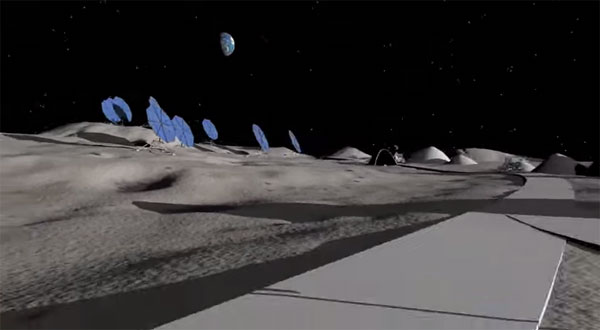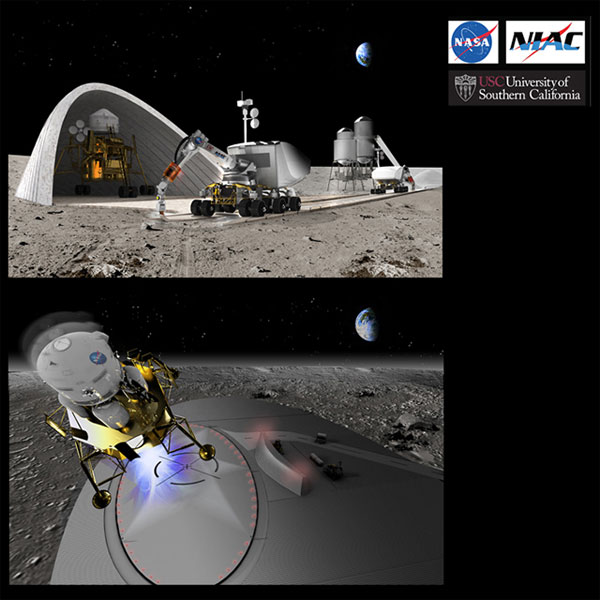Use 3D technology based on Mars
NASA and private sponsorships have promised to send people to Mars in the near future. However, after a 9-month trip to the red planet, the first astronauts needed a fully equipped base to live and began to explore. And finally, the solution is to bring the robots to the front and use 3D printing technology to build the buildings on the surface of Mars.

This is the result after many years of research led by Behrokh Khoshnevis, NASA engineer from the University of Southern California to find ways to bring technologies from the Earth to Mars, serving the mission of conquering human Mars. Future.The method of printing buildings proposed by Khoshnevis is called "contour engineering". Basically, this method differs only from traditional 3D printing techniques in that it uses larger machines and uses concrete instead of previous plastic materials.
At the beginning of the study, the idea of using 3D printing robots was not a new issue when building buildings in space. However, the biggest challenge here is the source of printing materials (ink) . Currently, engineers own many different concrete blending formulas but still mainly use sand, stone and cement as a binder with some chemical additives or other recycled materials. However, this formula can hardly be applied to materials on Mars. Therefore, a new concrete formula and 3D printer texture improvement is essential to be able to "print" buildings on this red planet.

According to exploration so far, the soil on Mars contains four times more sulfur than Earth. Even when finding a concrete mixing method to overcome the sulfur problem, Mars on Mars is much more coarse than the Earth and can cause obstruction and obstruction to the 3D printing process. Sand on Earth has been eroded by water and wind for billions of years to create the current fine sand. In contrast, Mars on Mars is large, rough and almost never experienced sand erosion on Earth's beach.
However, the construction of works on Mars also has certain advantages. That's because the atmosphere is almost atmospheric, unaffected by weather and gravity is much weaker than Earth. Therefore, buildings on Mars will not be subjected to wind pressure or gravity to reduce the overall life of the infrastructure.

Under the plan, some of the first structures for humans will be built on the Martian surface including the landing of space spacecraft, roads, wind walls and shading, heat-resistant walls, security protect people from small meteorites and dust on Mars. NASA hopes to improve and apply construction machines and overcome the problem of creating fine sand to mix concrete not only for construction on Mars but also on the Moon (also with difficult situations) in the future.
In the latest report, NASA has not yet announced the exact time when it will take 3D printing robots to the surface of Mars or Moon to create the infrastructure for pioneering astronauts. Meanwhile, the Mars One program hopes that it will begin to form a permanent base on Mars in 2014 while SpaceX is expected to start in 2026. Though some opinions are skeptical. on the feasibility of the above deadlines, however, NASA will of course do a lot of research and will soon have positive results in the near future.
Video simulating the activity of robots working on the Martian surface:
- Mars was once warm and rainy
- Did the ocean on Mars get into the rock?
- The bold idea of the American architect guy: 'Planting' houses on Mars from mushroom roots
- NASA explains the confusing
- Elon Musk wants to put the artificial sun on Mars
- Oxygen generator on Mars
- Top 10 photos of Mars
- People need to modify their DNA if they want to become pregnant on Mars
- NASA revealed technology to send people to Mars
- Life may have existed 700 million years on Mars
- NASA is studying how to build houses on the Moon
- NASA has just taken a monstrous photo that looks like a fake about Mars
 Van Allen's belt and evidence that the Apollo 11 mission to the Moon was myth
Van Allen's belt and evidence that the Apollo 11 mission to the Moon was myth The levels of civilization in the universe (Kardashev scale)
The levels of civilization in the universe (Kardashev scale) Today Mars, the sun and the Earth are aligned
Today Mars, the sun and the Earth are aligned The Amazon owner announced a secret plan to build a space base for thousands of people
The Amazon owner announced a secret plan to build a space base for thousands of people